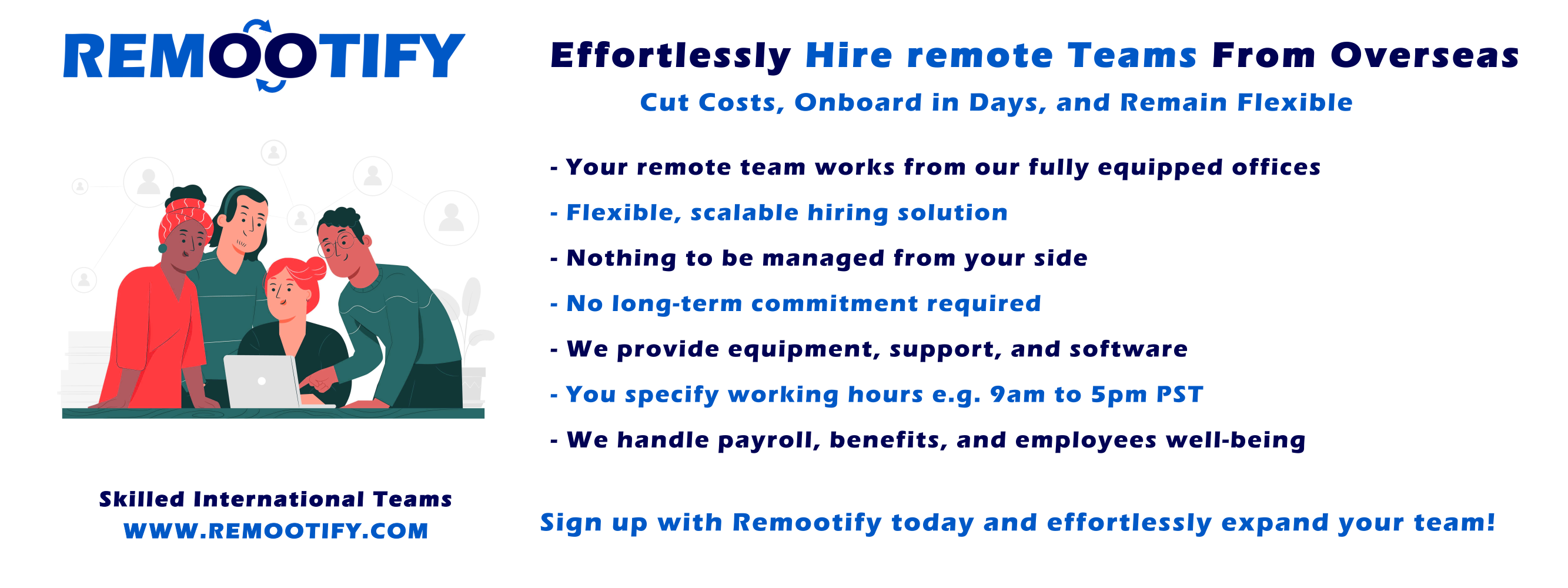Start hiring YOUR REMOTE TEAM, Today!
Enter your information below to start a discussion with one of our team members!

Every organization, whether it’s a government entity or privately owned business, desires to build an effective equity strategy. However, the complexity of this task can make it seem daunting.
This article simplifies the process by outlining four essential steps to streamline your strategic planning and elevate your equity efforts. Ready to master equitable investment? Let’s dive in!
Key Takeaways
- The four essential steps for planning a successful equity strategy are: defining scope and goals, conducting frequent audits, getting team alignment, and assigning responsibility.
- Defining clear equity objectives and setting measurable goals are important for tracking progress and ensuring fairness in organizations.
- Regularly assessing current equity efforts helps identify areas for improvement and make necessary adjustments to achieve equity goals.
- Getting team alignment and allocating resources effectively ensure that everyone is working towards the same objectives in implementing an equitable strategy.
Step 1: Define Your Scope and Goals
Clearly articulate your equity objectives and establish measurable and achievable goals for your organization’s strategic planning.
Clearly define equity objectives
Equity objectives are the goals you want to reach. They show fairness in your team. To make them clear, first think about what fair means for your group or company. Then turn that into a goal you can work towards and check on.
Make sure these goals give everyone a fair chance to succeed or grow in their jobs. It is not right if some people have more chances than others because of who they are or where they come from.
Set measurable and achievable goals
To set measurable and achievable goals for your equity strategy, it is important to clearly define your objectives. This means identifying the specific outcomes you want to achieve in terms of equity and inclusion within your organization or community.
For example, you may want to increase representation of underrepresented groups in leadership positions or reduce disparities in access to resources. Once you have defined your objectives, it is crucial to ensure that they are measurable.
This allows you to track progress over time and determine whether you are making meaningful strides towards achieving your goals. Additionally, it is important that the goals you set are realistic and attainable.
Setting overly ambitious goals can lead to frustration and decrease motivation if they are not achieved. By setting measurable and achievable goals, you can create a roadmap for success and monitor your progress along the way.
[Relevant Fact]– The first step is to understand your community and add an equity lens to how organizations approach their work.
Step 2: Conduct Frequent Equity Audits
Regularly assess your current equity efforts and identify areas for improvement to ensure ongoing progress and alignment with your goals.
Regularly assess current equity efforts
Regularly assessing current equity efforts is a critical step in planning a successful equity strategy. By conducting frequent equity audits, organizations can identify areas for improvement and track progress towards their equity goals.
This allows them to make necessary adjustments and ensure that they are on the right track. It is important to regularly assess current equity efforts to hold team members accountable and ensure that everyone is working towards the same objectives.
By monitoring their efforts and comparing them to other equity leaders, organizations can continue to improve and strive for greater equity in their operations.
Identify areas for improvement
To develop a successful equity strategy, it’s important to identify areas for improvement. Regularly assessing your current equity efforts will help you pinpoint specific areas that need attention.
This could involve looking at hiring practices, promotion rates, or representation within the organization. By identifying these areas for improvement, you can develop targeted action plans to address any inequities and make meaningful progress towards your equity goals.
Remember, continuous improvement is key in building an effective and inclusive equitable strategy.
Step 3: Get Team Alignment and Set Budgeting Goals
Ensure all team members are aligned and in agreement with the equity strategy by clearly communicating the goals and objectives, as well as allocating resources and budget effectively.
Ensure all team members are on the same page
To ensure the success of your equity strategy, it is crucial that all team members are aligned and working towards the same goals. This means clearly communicating the objectives and expectations to everyone involved.
By doing so, you can avoid misunderstandings or misinterpretations that may hinder progress. Additionally, make sure to allocate resources and budget effectively so that each team member has what they need to carry out their responsibilities.
Remember, a cohesive and united team is key to implementing an effective equity strategy.
Allocate resources and budget effectively
To ensure the success of your equity strategy, it is crucial to allocate resources and budget effectively. This means carefully considering where and how you invest your money, time, and manpower.
Take into account the specific needs and goals of your equity objectives when making these decisions. It’s important to prioritize areas that require improvement based on regular audits.
Get everyone on board with a clear understanding of their roles and responsibilities in operationalizing equity actions. By allocating resources strategically, you can maximize the impact of your efforts and hold team members accountable for achieving results.
Step 4: Assign Responsibility for Operationalizing Equity Actions
Assign team members specific roles and responsibilities for implementing equity actions, ensuring accountability throughout the process.
Define roles and responsibilities
In order to successfully operationalize equity actions, it is important to define clear roles and responsibilities within your team. This means assigning specific tasks and duties to individuals who will be responsible for implementing the equity strategy.
By doing so, everyone knows what their role is and what is expected of them. It also helps in holding team members accountable for their actions. According to BCG’s research on strategic planning success factors, having clearly defined roles and responsibilities is crucial for effective implementation of any strategy.
Additionally, a study by Harvard Business Review found that teams with well-defined roles perform better than those without defined roles. So, take the time to clearly outline who will do what when it comes to operationalizing your equity actions.
Accordingly, holding team members accountable for their assigned responsibilities ensures that progress is being made towards achieving your equity goals. This can be done through regular check-ins, performance reviews or evaluations tied directly to the equitable outcomes you are aiming for.
Hold team members accountable
Hold team members accountable is a crucial step in planning a successful equity strategy. By defining roles and responsibilities, organizations can ensure that everyone is aware of their duties in promoting equity.
This helps create a sense of ownership and responsibility among team members, driving them to actively contribute towards achieving equity goals. Regular check-ins and performance evaluations can help monitor progress, provide feedback, and address any issues or challenges that may arise.
Holding team members accountable fosters a culture of transparency, trust, and commitment to the organization’s equity objectives.
Bonus Step: Monitor, Adjust, and Benchmark
Continuously track progress, make necessary adjustments, and compare your equity efforts to other leaders in order to ensure ongoing success.
Track progress and make necessary adjustments
Track your progress and make adjustments as needed to ensure the success of your equity strategy. Regularly monitor and evaluate the outcomes of your equity efforts using performance markers and benchmarks.
This will help you identify areas that need improvement or further attention. If you notice any gaps or challenges, take proactive steps to address them promptly. By tracking progress and making necessary adjustments along the way, you can continually refine your equity strategy for optimal results.
Compare your efforts to other equity leaders
To ensure the success of your equity strategy, it’s important to compare your efforts to other equity leaders. By doing so, you can gain valuable insights and learn from their experiences.
Look at what they have done well and consider how you can incorporate those practices into your own strategy. It’s also important to analyze any gaps or areas where you may be falling behind compared to industry leaders.
This will help you identify areas for improvement and make necessary adjustments to stay competitive in promoting equity within your organization. Remember, continuous learning and benchmarking against other equity leaders is crucial for the ongoing development and refinement of your equity strategy.
Conclusion
In conclusion, planning and implementing a successful equity strategy is crucial for organizations to promote fairness and inclusivity. By following the four essential steps outlined in this article – defining scope and goals, conducting frequent audits, getting team alignment, and assigning responsibility – organizations can ensure they are on the right track towards achieving their equity objectives.
It requires careful planning, active implementation, and continuous monitoring to create an inclusive environment that benefits everyone involved.
FAQs
1. What is equity planning?
Equity planning is an act of creating a plan or strategy for investing, with the goal of increasing your wealth in the stock market over time.
2. How do I start developing an equity strategy?
Start with defining your strategic goals and business objectives within your business context. Then assess capabilities and develop an action plan tailored to those needs.
3. Is risk management important when building an effective equity plan?
Yes, risk management is vital as it aids in handling risks linked to long-term investment while ensuring diversification in asset allocation.
4. Can you create an Equity Plan without financial planning?
No, financial planning acts as a guide towards building a successful portfolio that helps manage taxable events and calculating equity awards efficiently
5. Will implementing an equity action help reach my investment strategy goal?
Yes! Implementing fairness into every bit of your strategic plans leads to achieving successful functional strategies meeting DE&I Management’s plan standards.
6. Why is “Planning a Successful Equity Strategy: Four Essential Steps” beneficial for us?
This guides through four steps to effective strategic development, helping investors prepare well-informed decisions from assessing assets till achievement of defined success markers.




